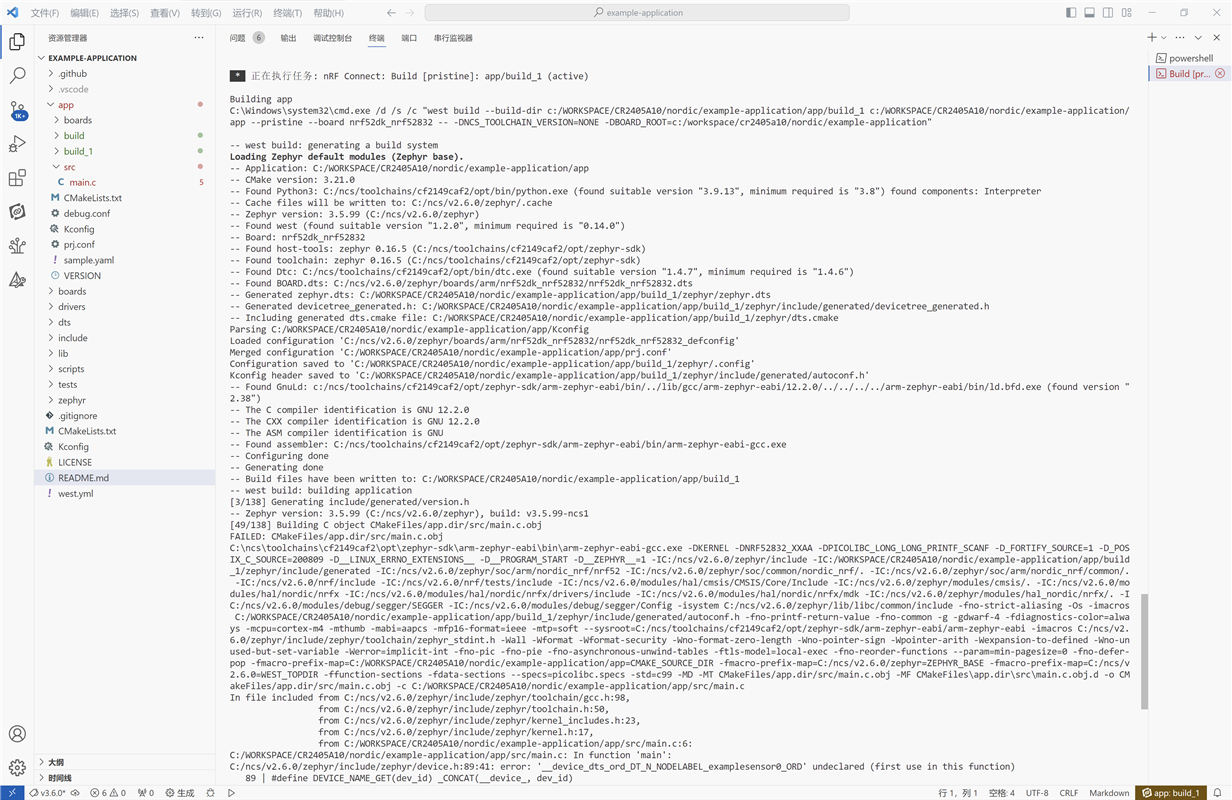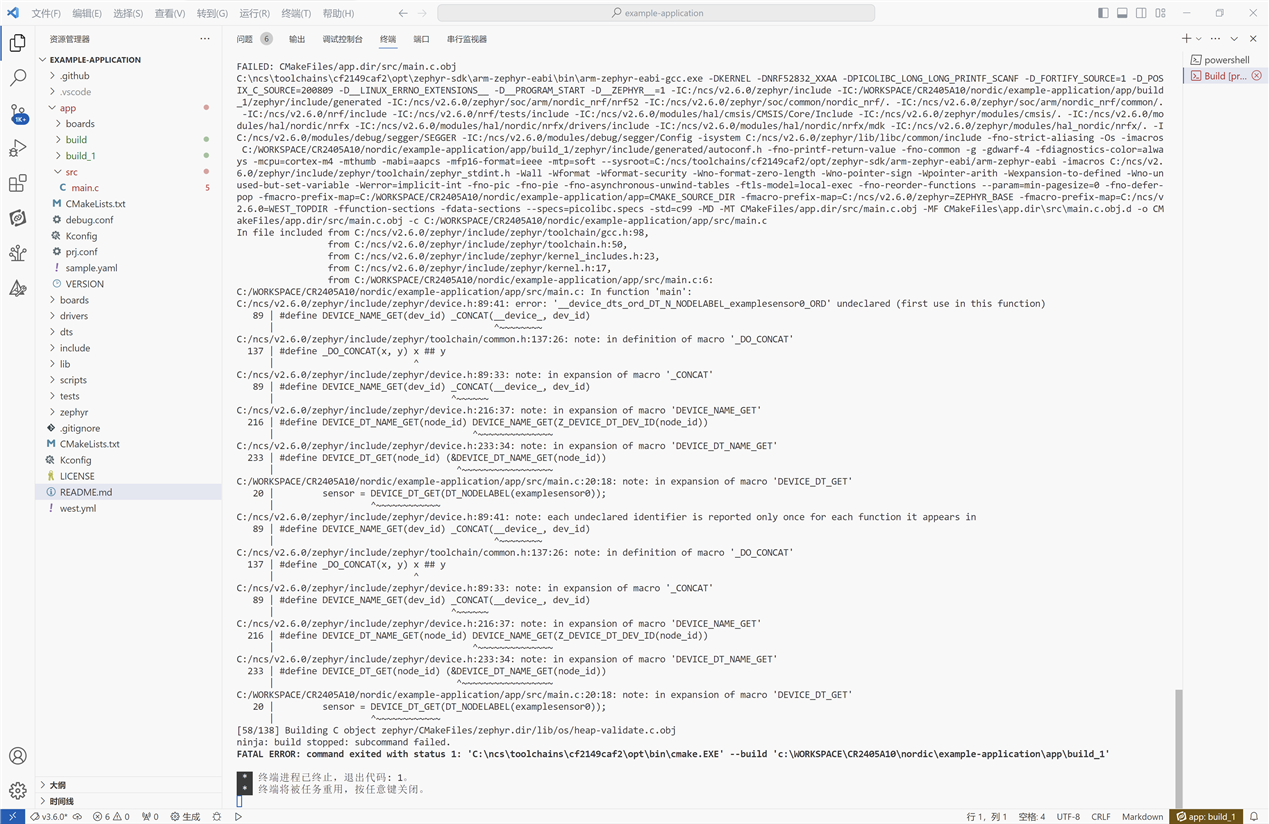Hi,
I want to connect LDC2114 to nRF9160. I write the nrf9160dk_nrf9160_ns.overlay and the astri,ldc2114.yaml. I don't know how to set GPIOs in &i2c1 - ldc2114: ldc2114@2a which are the output pins of LDC2114 and input pins of nRF9160.
/ {
/* Map the devices to the aliases of the application. */
aliases {
ldc-sensor = &ldc2114;
};
};
&i2c1 {
compatible = "nordic,nrf-twim";
#address-cells = < 0x1 >;
#size-cells = < 0x0 >;
reg = < 0x9000 0x1000 >;
// clock-frequency = < 0x186a0 >;
clock-frequency = <I2C_BITRATE_STANDARD>;
interrupts = < 0x9 0x1 >;
status = "okay";
pinctrl-0 = < &i2c1_default >;
pinctrl-1 = < &i2c1_sleep >;
pinctrl-names = "default", "sleep";
ldc2114: ldc2114@2a{
compatible = "astri,ldc2114"; //binding
status = "okay";
reg = < 0x2a >;
label = "LDC2114";
gpio-controller;
#gpio-cells = < 0x2 >;
intb-gpios = < &gpio0 25 0 >; // LDC2114 INTB pin -> nrf9160 INPUT P0.25
in0-gpios = < &gpio0 24 0 >; // LDC2114 OUT0 pin -> nrf9160 INPUT P0.24
in1-gpios = < &gpio0 23 0 >; // LDC2114 OUT1 pin -> nrf9160 INPUT P0.23
in2-gpios = < &gpio0 22 0 >; // LDC2114 OUT2 pin -> nrf9160 INPUT P0.22
in3-gpios = < &gpio0 21 0 >; // LDC2114 OUT3 pin -> nrf9160 INPUT P0.21
};
};
&i2c2 {
status = "disabled";
};
&pinctrl {
i2c1_default: i2c1_default {
group1 {
psels = <NRF_PSEL(TWIM_SDA, 0, 30)>,
<NRF_PSEL(TWIM_SCL, 0, 31)>;
};
};
i2c1_sleep: i2c1_sleep {
group1 {
psels = <NRF_PSEL(TWIM_SDA, 0, 30)>,
<NRF_PSEL(TWIM_SCL, 0, 31)>;
low-power-enable;
};
};
};
# Copyright (c) 2018, Peter Bigot Consulting, LLC
# SPDX-License-Identifier: Apache-2.0
description: Sensor LDC2114
compatible: "astri,ldc2114"
include: [sensor-device.yaml, i2c-device.yaml, gpio-controller.yaml, base.yaml]
properties:
reg:
required: true
#alert-gpios:
"#gpio-cells":
const: 2
intb-gpios:
type: phandle-array
description: |
LDC2114 INTB pin -> nrf9160 INPUT P0.25
in0-gpios:
type: phandle-array
description: |
LDC2114 OUT0 pin -> nrf9160 INPUT P0.24
in1-gpios:
type: phandle-array
description: |
LDC2114 OUT1 pin -> nrf9160 INPUT P0.23
in2-gpios:
type: phandle-array
description: |
LDC2114 OUT2 pin -> nrf9160 INPUT P0.22
in3-gpios:
type: phandle-array
description: |
LDC2114 OUT3 pin -> nrf9160 INPUT P0.21
gpio-cells:
- pin
- flags
Also, What else should I do in order to connect the devices?
Best regards,
Liza




